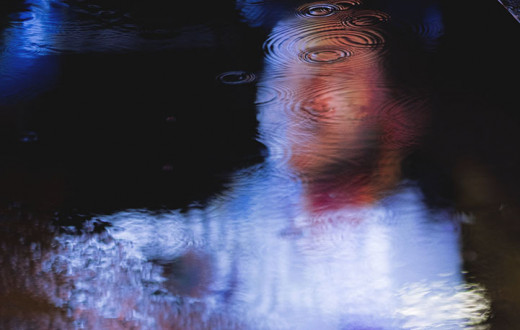By Paige Leigh Reist | Posted: March 07, 2019
On March 4th, beloved “Riverdale” and “Beverly Hills 90210” actor Luke Perry passed away from complications after suffering a massive stroke. He was only 52. Understandably, this sudden loss has many of us reeling, and wondering about the causes and implications of a stroke: what puts us at risk? What are the signs of a stroke, and most importantly, how can we take measures to prevent them?
The loss of Luke Perry is tragic, but it’s also an opportunity to raise awareness for those at risk of stroke. Many factors that increase our risk of stroke can be managed and controlled, so that you and your loved ones have a chance to live a healthier and longer life.
What is a stroke?
According to the National Institute of Neurological Disorders and Stroke, “A stroke occurs when the blood supply to part of the brain is suddenly interrupted or when a blood vessel in the brain bursts, spilling blood into the spaces surrounding brain cells. Brain cells die when they no longer receive oxygen and nutrients from the blood or there is sudden bleeding into or around the brain.”
A stroke can degrade your speech, your emotional control, and how your brain receives, processes, and reacts to information, including memory and awareness. It can also affect your entire body, sometimes even resulting in one-sided paralysis, numbness, or pain.
Am I at risk of a stroke?
There are a few things to consider when you ask yourself if you’re at risk of a stroke:
Genetics: If a closely related family member has suffered a stroke in the past, your susceptibility to strokes is higher.
Sex: Strokes affect women and men differently. Women suffer from more strokes than men: the risks are higher during both pregnancy and menopause, and the use of hormonal birth control increases the risk of a stroke as well. It’s also been speculated that more women than men put aside their self-care in the interest of serving others first, such as their children, partners, and parents, and that this increased stress can negatively affect how the body recovers from a stroke.
Age: Although a stroke can occur at any age, the groups most at risk for stroke are newborns and those above the age of 55. Deaths from stroke in younger age groups are rare. About 7-9 in one million Americans under the age of 50 die annually from strokes caused by a blocked blood vessel or a brain hemorrhage. Here are some of the most common causes of fatal stroke for a man in his 50s, like Luke Perry.
Race: Black and Hispanic individuals, especially women, have roughly twice the risk of stroke than other ethnic groups.
What are the signs of a stroke?
Time is of the essence when you notice signs of stroke. If you or a loved one experience any of the following, call 911 and seek medical care immediately.
- Dizziness or disorientation
- Numbness in one side of your face or body
- Severe headache with no trigger
- Inability to stay balanced, trouble with coordination
- Confusion and difficulty speaking
If you’re still unsure, use the F.A.S.T. test for a quick diagnosis:
- Face: Is one side of the face drooping?
- Arms: Can you raise both arms to an equal height, or does one drop?
- Speech: Does your speech sound slurred or unclear?
- Time: Write down the time that you first noted symptoms: this will be essential information for first responders.
How can I prevent a stroke?
The number one thing that you can do to prevent a stroke is to pursue a healthy lifestyle. There are several factors that play into health, but more and more research suggests that our stress levels dictate a great deal of our wellness, from the choices we make to the way our body behaves. One tried-and-true way of combating stress is meditation. In addition to promoting immunity, longevity, brain health and plasticity, better sleep, and happier waking hours, studies show that meditation directly lowers the risk of heart attack and stroke. If you’re new to meditation, check out these tips to get started!
As well as meditation, there are a few simple steps that you can take to lower your risk of stroke:
Cut your salt intake. An easy way of doing this is to cook more, eat fewer packaged and pre-prepared foods, and eliminate fast food. If you’re missing salt, experiment with other spices to infuse your meals with flavor!
Quit smoking. If you smoke cigarettes or use a vaporizer, you are seriously damaging your overall health. Consult with your health care provider to find methods of quitting that work for you.
Pursue a healthy weight. If you’re overweight or obese, your risk of stroke is higher. Work with your health care provider to come up with a lifestyle change plan to reach a healthier weight. We recommend following a vegetarian Ayurvedic diet: you can find the basics of Ayurveda diet here!
Exercise. A moderate amount of exercise can have a huge impact on your overall health and well-being, and significantly lower your risk of stroke. If you live a sedentary lifestyle, start by incorporating a daily 20-minute walk into your routine. Work your way up to at least 30 minutes of moderately strenuous cardiovascular exercise a day--the goal is to be slightly out of breath. Be careful not to overexert yourself to the point where exercise becomes detrimental rather than helpful to your health--pay attention to these 8 signs that you might be overtraining.
Preventing a stroke can be as easy as making a few lifestyle changes. Not only will practices like exercise and meditation lower your risk for stroke, but you’ll feel more energized, healthier, and happier in your everyday life as well. Meditation, especially, can have a transformative effect on the way that your life--when you sit with yourself in silence, you tend to become your own best friend.
If you believe that you might be at risk for stroke, implement the above suggestions and consult with your health care provider for more information.
Paige Leigh Reist is a writer, editor, blogger, and creative writing instructor.























